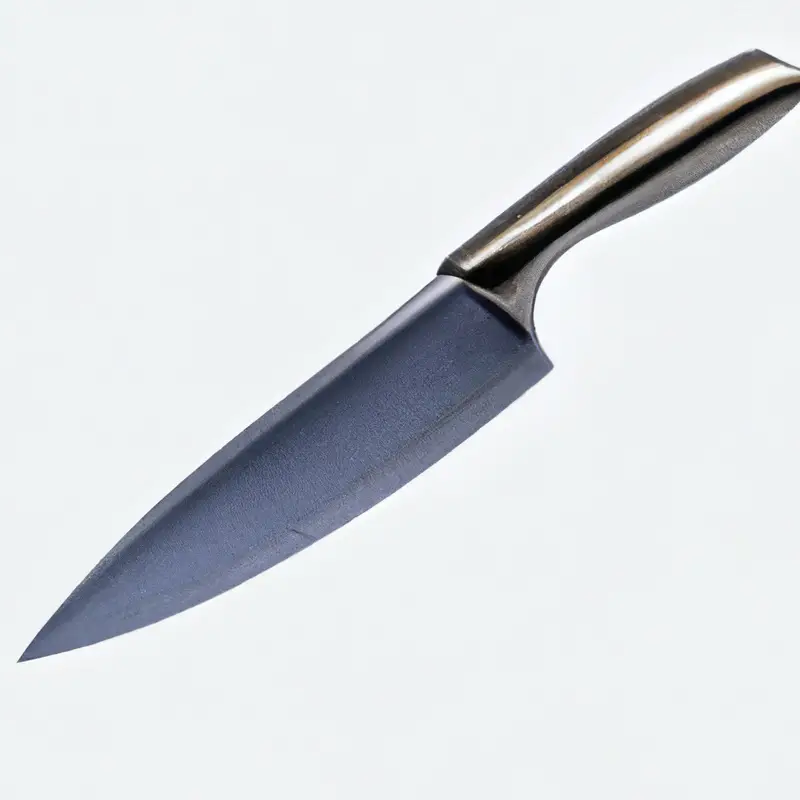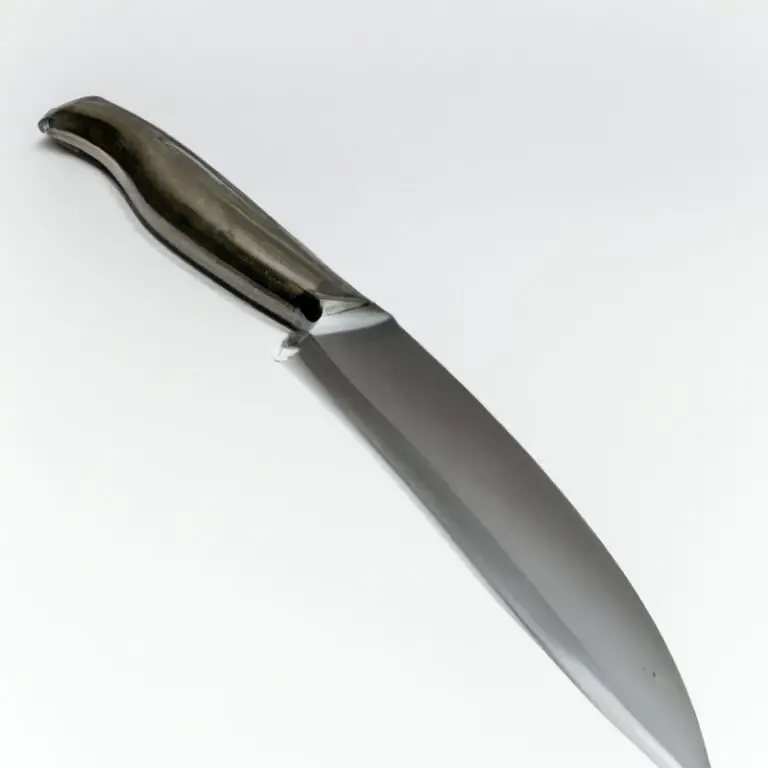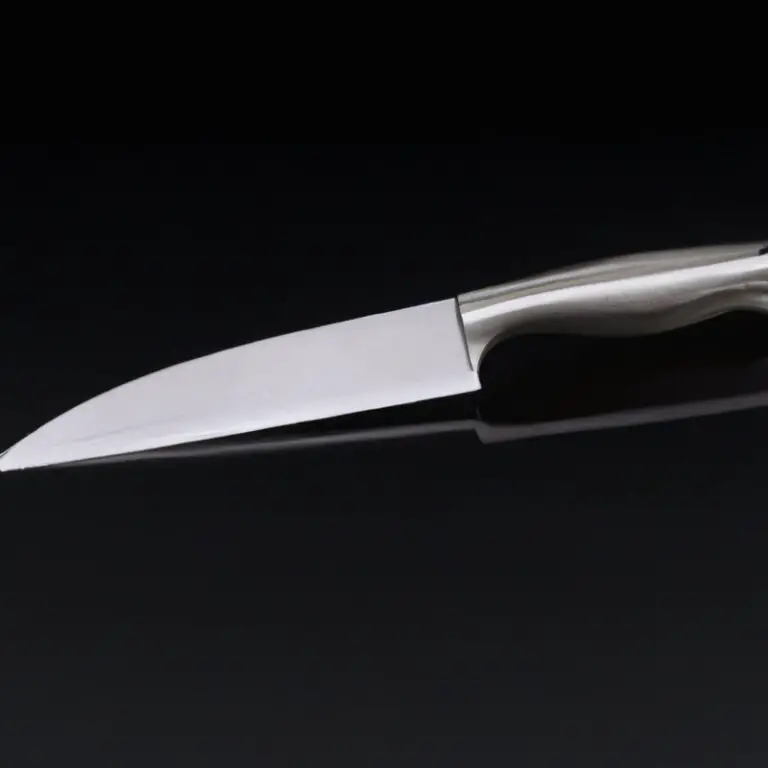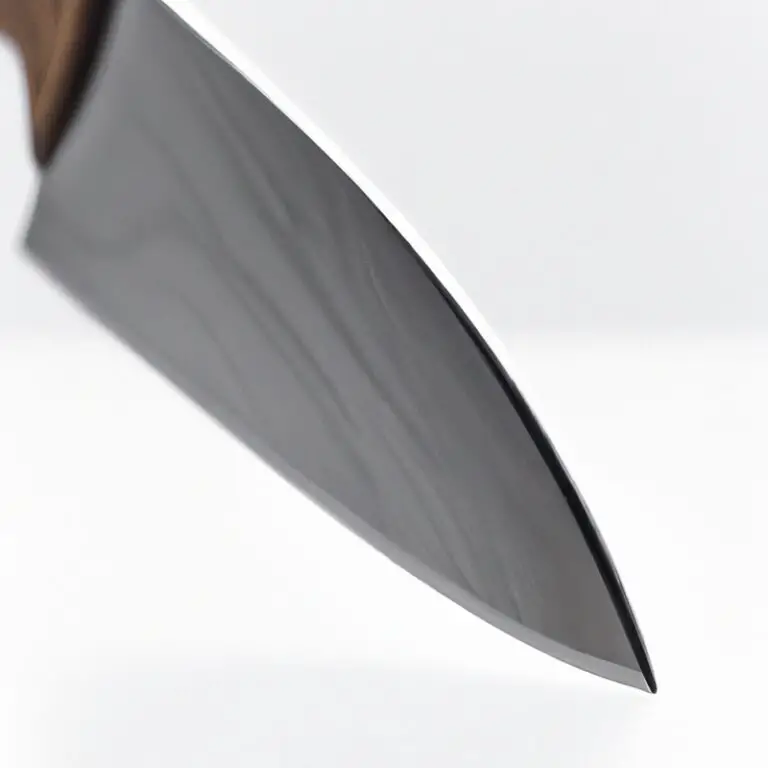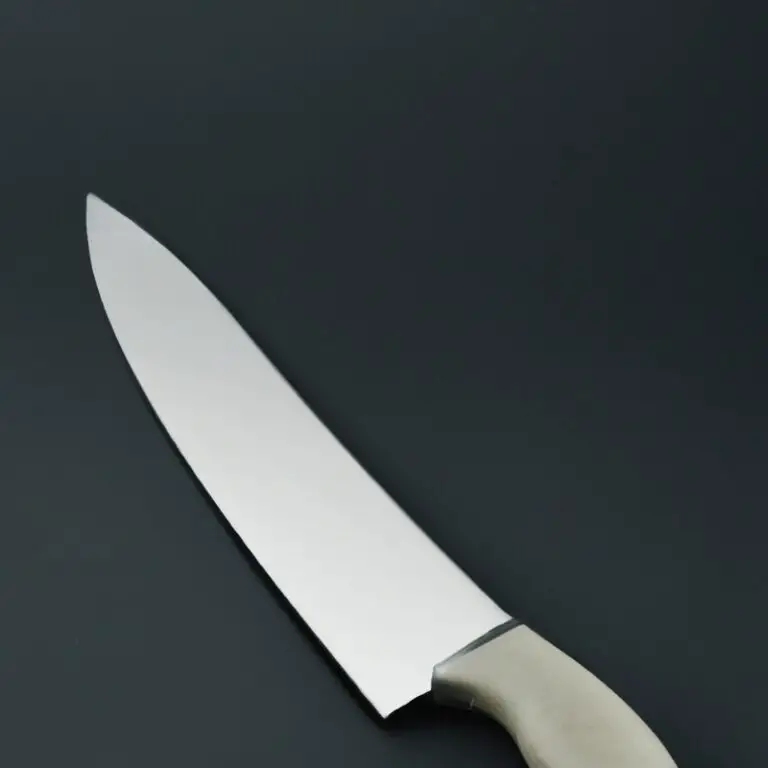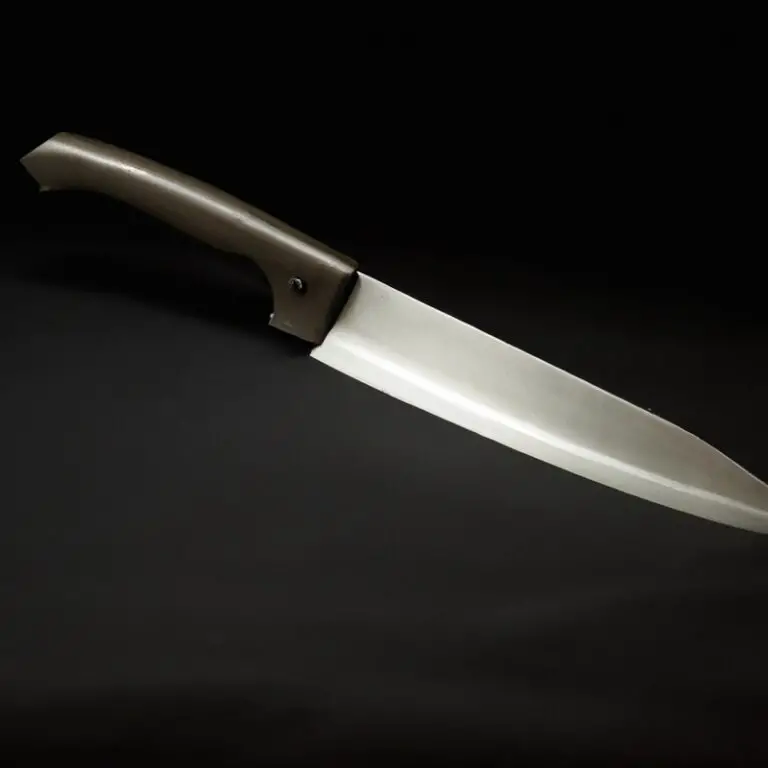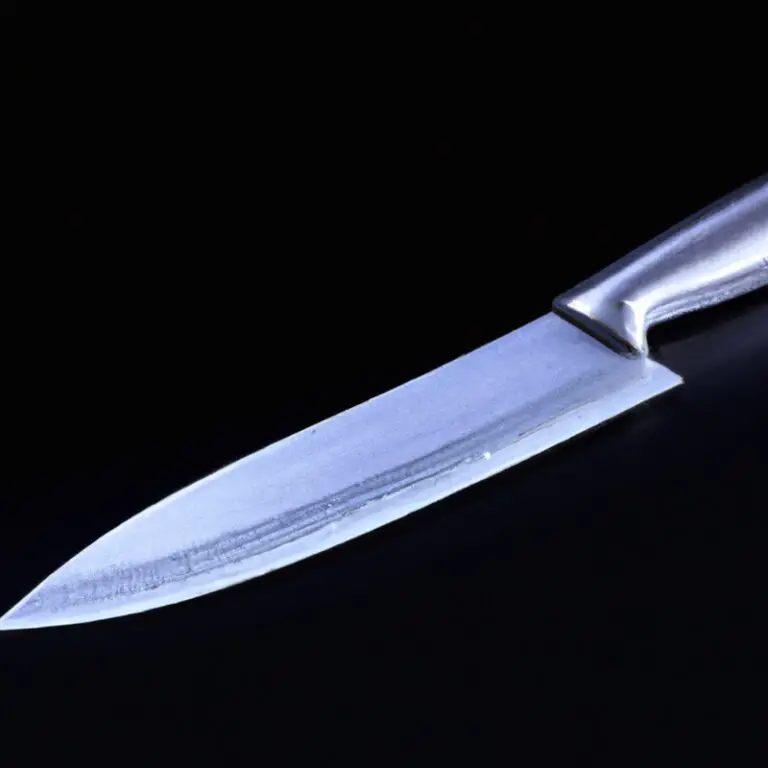How To Julienne Zucchini With a Santoku Knife? Easy!
Key Takeaways:
- A Santoku knife is a versatile tool that can quickly and easily julienne zucchini into thin, uniform strips.
- To julienne zucchini with a Santoku knife, start by trimming off the ends and slicing the zucchini lengthwise into thin strips before cutting into matchstick-size pieces.
- Using proper technique and a sharp Santoku knife can help you achieve more evenly sized and visually appealing zucchini strips for your dishes.
- Remember to exercise caution and proper knife handling to avoid injury while julienning zucchini with a Santoku knife.
Have you ever tried to julienne zucchini, only to end up with uneven, sloppy strips? Don’t worry, it’s a common struggle when using the wrong knife for the job.
That’s why today, I’m here to teach you how to julienne zucchini with a Santoku knife.
As an avid cook and self-proclaimed knife enthusiast, I know the importance of using the right tool for the job. In this article, we’ll cover everything from preparing your zucchini to achieving a consistent julienne cut.
Plus, I’ll share some tips on maintaining the quality of your Santoku knife for long-term use and explore other recipes that call for julienne zucchini.
Let’s get started!
| Step | Description |
|---|---|
| Step 1: | Cut off the top and bottom of the zucchini with a Santoku knife. |
| Step 2: | Stand the zucchini on one end and slice it lengthwise into planks, about 1/8 to 1/4 inch in thickness, with a Santoku knife. |
| Step 3: | Stack the planks and slice them lengthwise into thin strips with a Santoku knife, resembling matchsticks. |
| Step 4: | Separate the strips with your hands to create julienne zucchini. |
Understanding the importance of the right knife for julienning zucchini
The right knife is crucial for julienning zucchini as it affects both the speed and precision of the cut. A Santoku knife is a preferred blade for this task since its flat blade and sharp edge can delicately slice through vegetables, including zucchini, with ease.
Unlike other knives, its size is suitable for julienning zucchini as it is wide and robust and can handle a variety of food sizes.
Using the correct knife, such as a Santoku, minimizes mistakes and ensures a consistent julienne cut which results in both efficient and visually appealing dishes.
Preparing your zucchini for julienning with a Santoku knife
Before julienning zucchini with a Santoku knife, it is essential to prepare it properly. Wash the zucchini thoroughly and dry it with a clean towel.
Cut off both ends of the zucchini and stand it on one end.
Slice it in half lengthwise, then lay each half flat on the cutting board with the skin side down. Using a sharp Santoku knife, make thin, even slices along the length of the zucchini, creating long, rectangular pieces.
Stack these pieces and slice them lengthwise into thin, matchstick-like pieces.
Remember to use a sharp knife and keep your fingers curled under to avoid injury. This preparation will ensure that your julienne zucchini is even and consistent in size and texture, allowing for better cooking and presentation.
Familiarizing yourself with the different parts of a Santoku knife
To julienne zucchini with a Santoku knife, it is important to be familiar with its parts. The Santoku knife consists of a blade and a handle.
The blade is typically shorter than a chef’s knife and has a flat edge, a slightly curved belly, and a pointed tip.
The blade is typically made of high-quality steel and is tapered to a very thin edge for precise cuts. The handle is generally made of wood or synthetic materials and is ergonomically designed for a comfortable grip.
Knowing the different parts of a Santoku knife can help you make precise cuts and prevent accidents while using the knife.
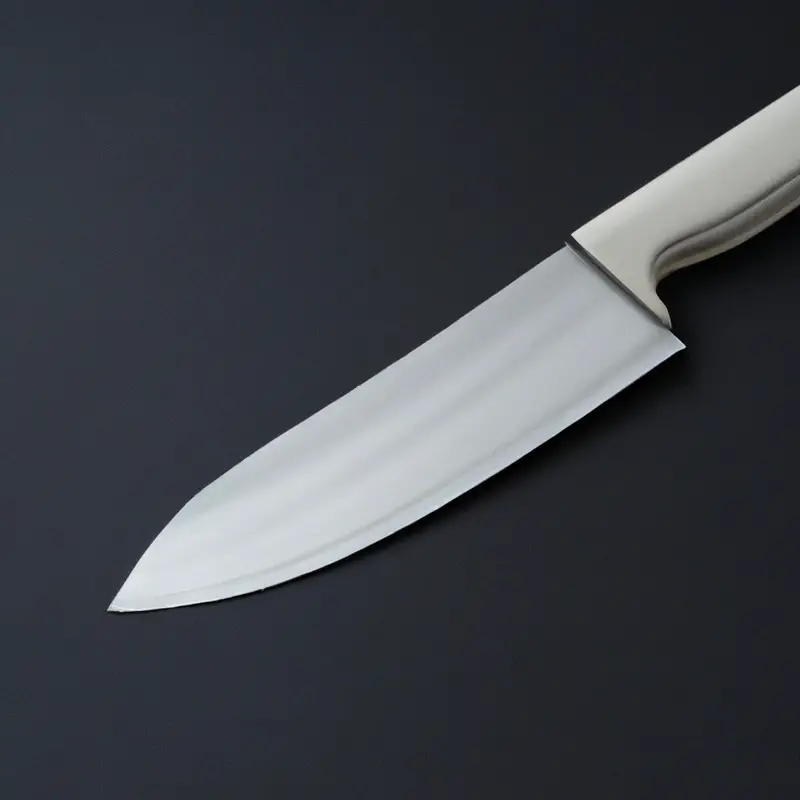
Choosing the right size Santoku knife for julienning zucchini
Choosing the right size Santoku knife is crucial for julienning zucchini. A smaller size Santoku knife with a blade length of 5-7 inches is ideal for slicing and dicing small vegetables such as zucchinis.
A shorter blade gives you better control and precision when julienning, which is essential for achieving consistent and thin slices.
On the other hand, a larger Santoku knife with a blade length of 8-10 inches can make julienning zucchinis more challenging, especially if you are not experienced. A bigger blade might not be as maneuverable, and you might find yourself struggling to keep a steady hand for precise cuts.
Therefore, it is recommended to choose a smaller size Santoku knife for julienning zucchinis to make the job easier, more efficient, and consistent.
The proper technique for holding a Santoku knife while julienning zucchini
When it comes to julienning zucchini with a Santoku knife, it is crucial to hold the knife properly. The proper technique involves holding the knife with a comfortable and firm grip.
To begin, hold the handle in your dominant hand and the blade between your thumb and forefinger.
Your middle finger should rest on the opposite side of the blade for extra stability. Next, use a back-and-forth motion with the blade while applying gentle pressure to the zucchini.
The blade should be positioned at a slight angle, and the hand holding the zucchini should guide it along the blade.
It is important to maintain a consistent angle and pressure while cutting to achieve an even julienne. Additionally, to avoid injuries, always keep your fingers curled and tucked away from the blade.
Practice makes perfect, so take your time and experiment with different techniques to find the one that works best for you.
With time and practice, you will be able to julienne zucchini like a pro with a Santoku knife.
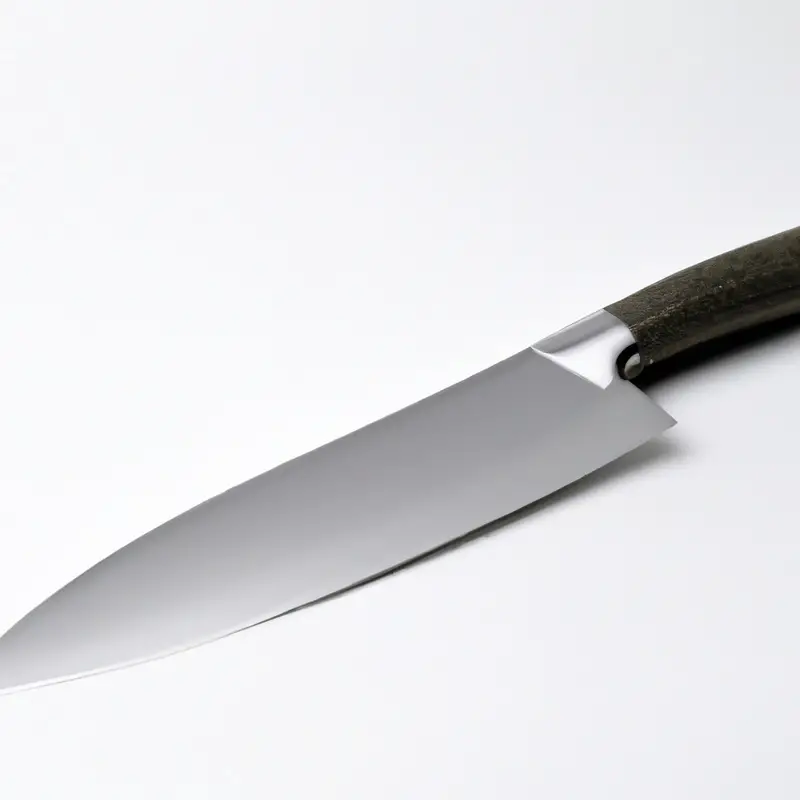
Achieving a consistent julienne cut with a Santoku knife
Achieving a consistent julienne cut with a Santoku knife requires precision and technique. To start, ensure that your knife blade is sharp and your zucchini is prepared uniformly.
Hold your zucchini with a steady grip and slice straight down, using a back-and-forth motion with the knife.
Keep your fingers away from the blade, and maintain a consistent thickness throughout your julienne cut. The size of the julienne will depend on the recipe requirements, but a thickness of 1/8 inch to 1/4 inch is ideal for zucchini.
Practice and patience will improve your skill, allowing you to achieve consistently even julienne cuts with your Santoku knife.
Maintaining the sharpness and quality of your Santoku knife for long-term use
Maintaining the sharpness and quality of a Santoku knife is crucial for effective julienning and its long-term use. Here are some tips on how to maintain your Santoku knife for optimal performance:
- Handwash your Santoku knife immediately after use with warm water and mild soap. Avoid using abrasive scrubbers or harsh chemicals that can damage the blade.
- Dry the knife thoroughly with a clean cloth or towel before storing it in a safe place, such as a knife block or a sheath.
- Regularly sharpen the blade using a sharpening stone or a honing rod. This will ensure that the knife maintains its sharpness and avoids dulling.
- Avoid using a Santoku knife on hard surfaces, such as glass or ceramic, as this can cause damage to the blade and affect its performance.
By following these tips, you can maintain the sharpness and quality of your Santoku knife, ensuring that it remains a valuable tool in your kitchen for long-term use.
Exploring other uses for a Santoku knife beyond julienning zucchini
When it comes to Santoku knives, they are not only versatile for julienning zucchini, but also for many other kitchen tasks. Here are some examples of other uses for a Santoku knife:
- Slicing meats: The sharp, thin blade of a Santoku knife makes it perfect for precision slicing of meats like chicken breasts, pork chops, and beef tenderloin.
- Dicing vegetables: Santoku knives can easily dice up vegetables like onions, peppers, and potatoes, giving you consistent, even pieces for your recipes.
- Chopping herbs: With its sharp, slim blade, a Santoku knife is ideal for chopping up fresh herbs like basil, cilantro, and parsley.
- Crushing garlic: Simply place a clove of garlic under the flat side of your Santoku knife and press down with the heel of your hand. The rock-and-chop motion will crush the garlic in seconds.
- Mincing ginger: Use the tip of your Santoku knife to quickly mince fresh ginger for your favorite Asian-inspired dishes.
By exploring different uses for your Santoku knife, you can get the most out of this versatile kitchen tool. With its sharp, agile blade, there is no limit to what you can do.
Experimenting with different recipes that call for julienne zucchini
Experimenting with different recipes that call for julienne zucchini can be a fun and delicious way to utilize your newly acquired julienning skills. Julienne zucchini can be added to salads, stir-fries, pasta dishes, and used as a healthy substitute for noodles in dishes such as lasagna or spaghetti.
It can also be pickled, grilled or baked for added texture and flavor.
One recipe to try is a zucchini noodle salad with a lemon vinaigrette. Julienne zucchini can be tossed with arugula, cherry tomatoes, and feta cheese for a refreshing and healthy salad.
Another recipe to experiment with is a zucchini fritter made with julienne zucchini, eggs, flour, and herbs.
These tasty fritters can be served as a side dish or a light vegetarian meal. Incorporating julienne zucchini into your cooking can also be a great way to add more vegetables to your diet.
It is a low-carb, low-calorie, and high-nutrient vegetable that can be a versatile addition to any meal.
Experimenting with different recipe ideas can lead to exciting new meals and encourage creativity in the kitchen.
Advantages of using a Santoku knife for julienning zucchini versus other types of knives
The Santoku knife has a few advantages over other types of knives when it comes to julienning zucchini. Firstly, the Santoku knife’s blade is slightly wider and shorter than the traditional chef’s knife, which makes it easier to control when julienning vegetables.
Secondly, the flat edge of the Santoku knife, as opposed to the curved edge of a chef’s knife, allows for more even cuts and a consistent julienne every time.
Lastly, the sharpness of the Santoku knife allows for a cleaner cut, reducing the likelihood of bruising or damaging the zucchini. Overall, the Santoku knife’s design and sharpness make it an excellent choice for julienning zucchini, providing precision, control, and consistency.
Final Verdict
Julienning zucchini with a Santoku knife is an essential skill for any home cook. With the right technique and a sharp knife, you can achieve consistent, uniform cuts every time.
By familiarizing yourself with the different parts of a Santoku knife, choosing the right size, and maintaining its quality, you can ensure your knife is always ready to julienne your zucchini to perfection.
As you experiment with different recipes that call for julienne zucchini, remember the advantages of using a Santoku knife for this task compared to other types of knives. By following these tips and practicing regularly, you’ll soon become a pro and have a flavorful and healthy addition to your meals.
Trust in your skills and the reliability of the information presented, and become the master of julienning zucchini with your trusty Santoku knife.

